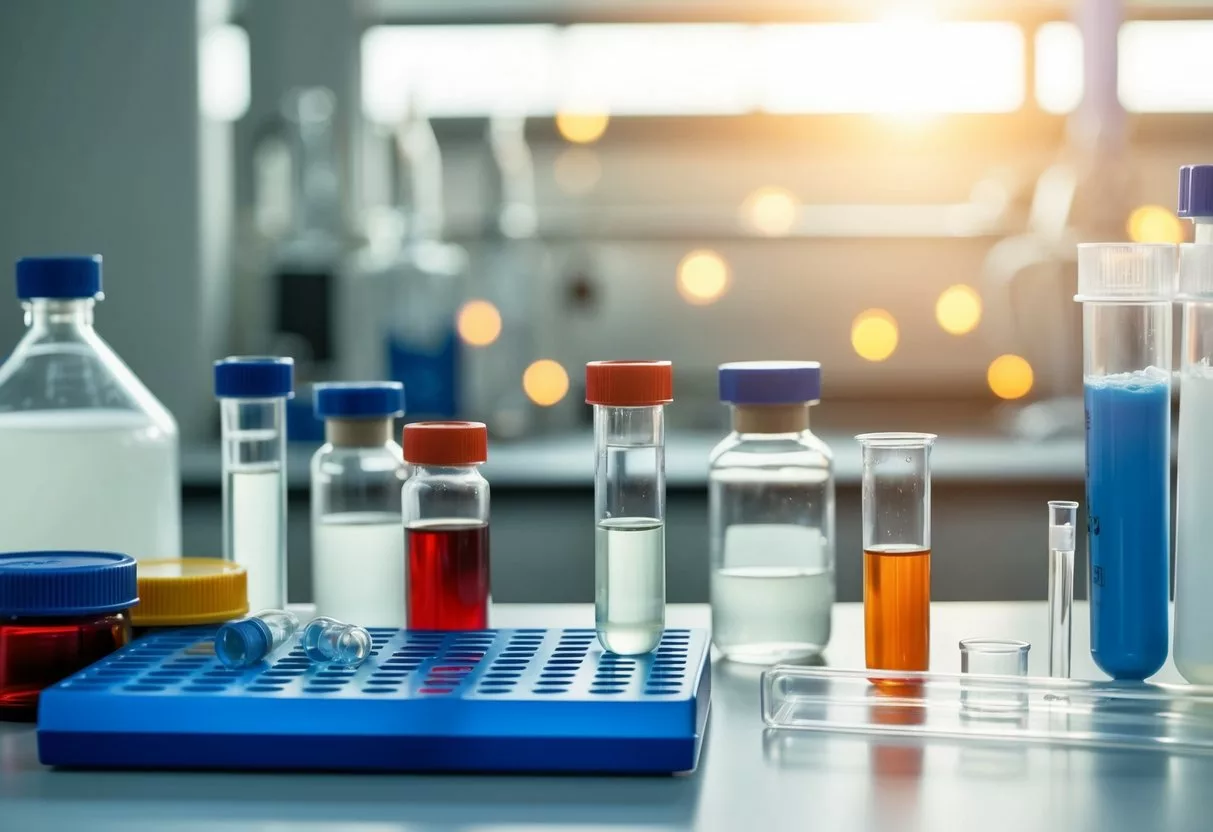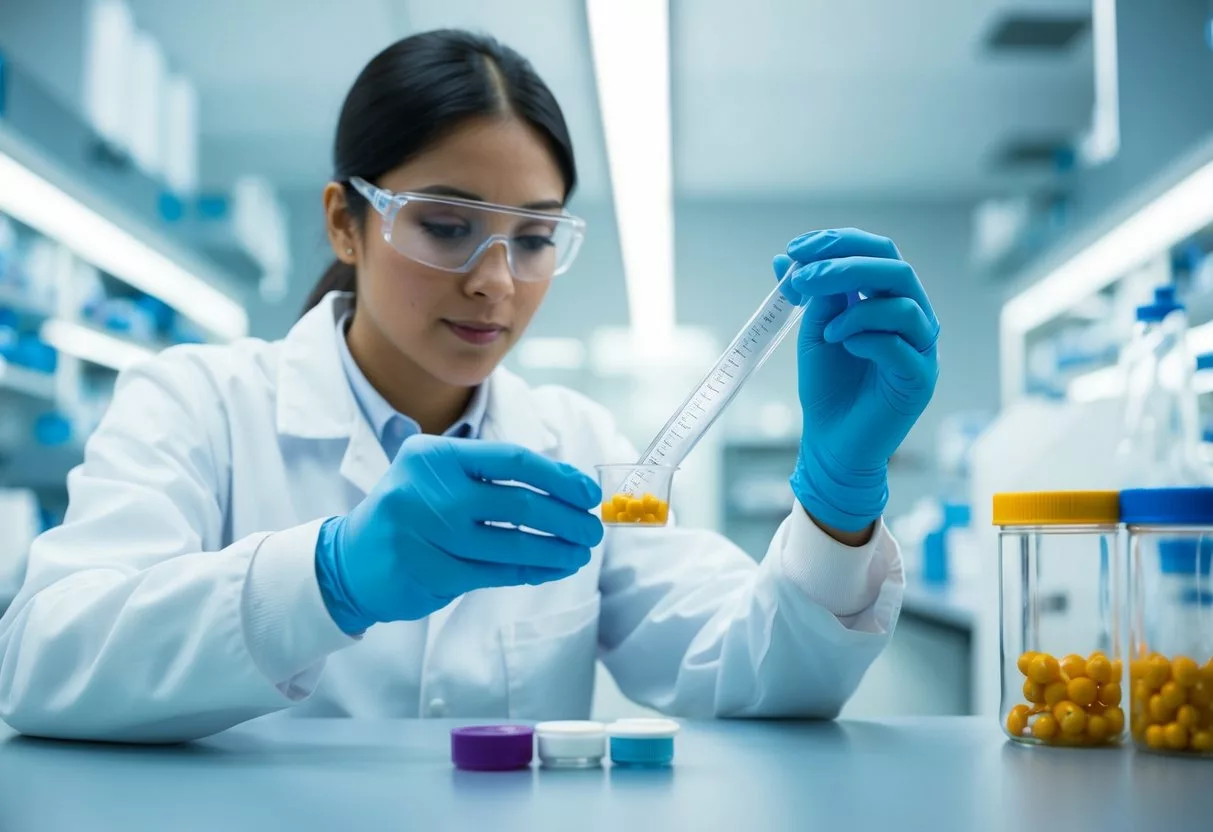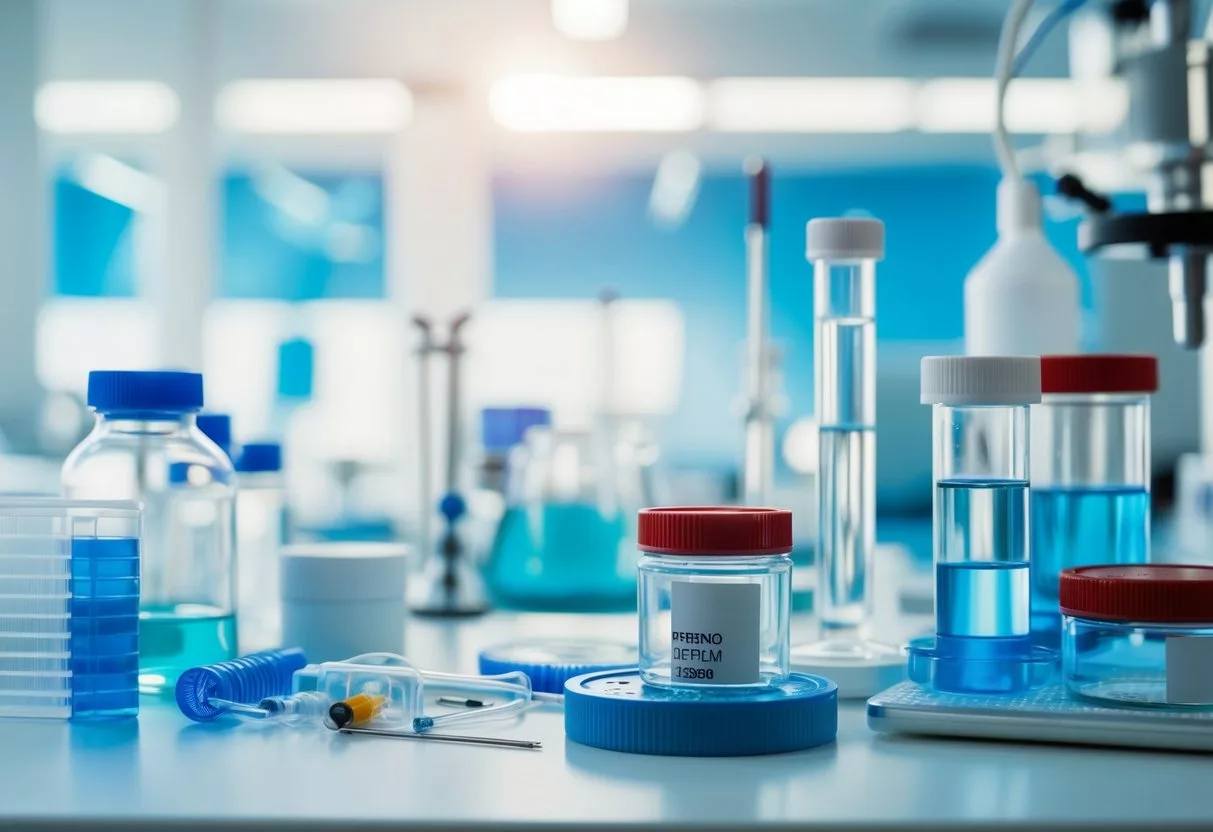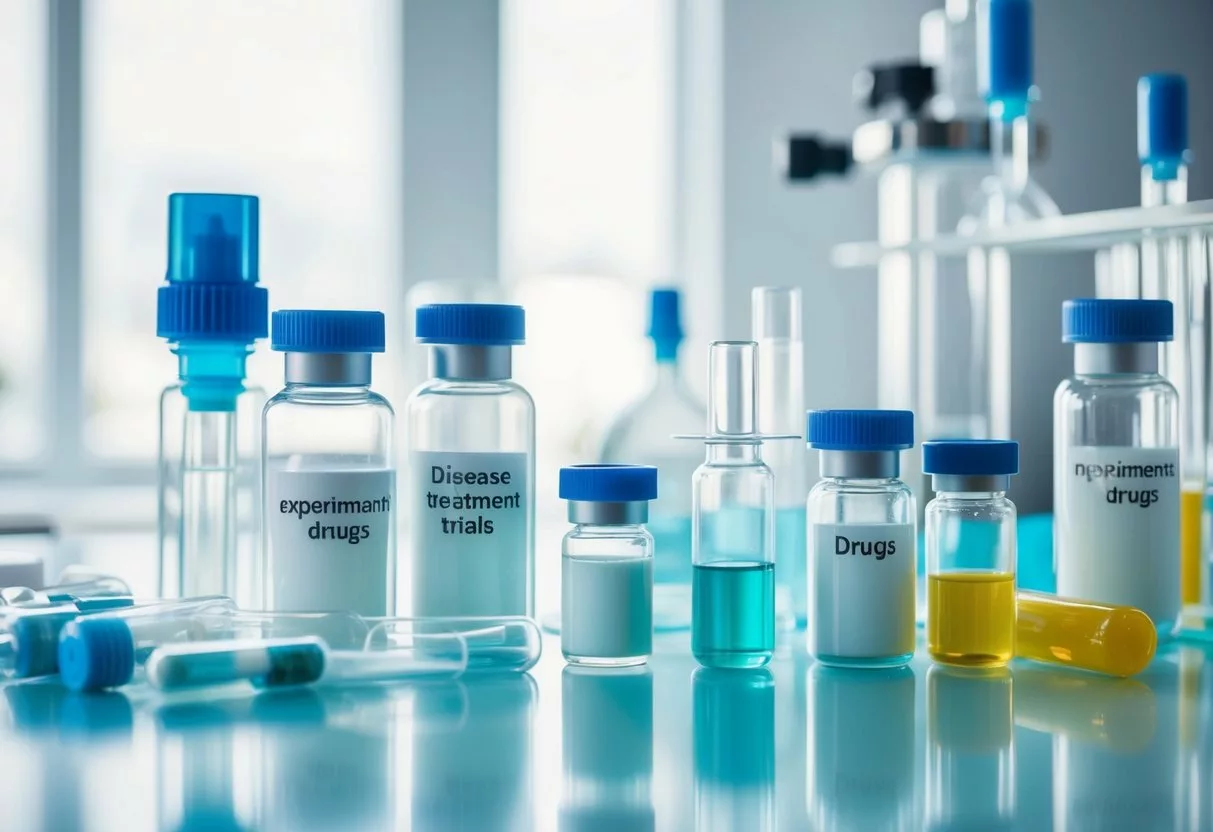Pharmaceutical trials play a vital role in bringing new medicines to the market. These tests help make sure drugs are safe and work well before doctors can give them to patients.
Clinical trials are research studies that use human volunteers to add to medical knowledge.

Drug companies run trials in stages. They start with small groups and move to larger ones if early results look good. The U.S. Food and Drug Administration oversees this process to protect people’s health.
Trials check if new drugs cause side effects and if they treat illnesses better than current options.
Many people join trials to get new treatments before they’re widely available. Others want to help advance science. Taking part can be risky, but it may also save lives. Trials often focus on serious diseases that need better treatments.
The Importance of Clinical Trials

Clinical trials are crucial for testing new treatments and advancing medical knowledge. They help move research from the lab to real-world applications.
Advancing Medical Knowledge
Clinical trials are key to moving medicine forward. They test if new drugs, devices, or methods work and are safe.
Clinical research studies need people of all types to join. This helps make sure new treatments work for everyone.
Trials can find better ways to prevent, detect, or treat health issues. They may test new uses for existing drugs. Some look at how to improve quality of life for people with long-term conditions.
Results from trials guide doctors in treating patients. They also help shape health policies. Even when trials don’t find positive results, they still give valuable info.
From Preclinical Research to Clinical Application
The drug development process is long and complex. It starts with lab and animal studies. This is called preclinical research. If those show promise, the drug moves to human trials.
Clinical trials have several phases:
- Phase 1: Tests safety in a small group
- Phase 2: Looks at effectiveness and side effects
- Phase 3: Compares to current treatments
- Phase 4: Continues after drug approval
Each phase builds on the last. This careful process helps ensure new treatments are safe and work well before wide use. It can take years, but it’s vital for patient safety.
Types of Clinical Trials

Clinical trials test new treatments and gather important medical data. They come in different forms to study various aspects of health and disease. The two main types are interventional and observational studies.
Interventional Studies
Interventional studies test new drugs, devices, or procedures. Researchers assign participants to specific groups to compare outcomes.
Common interventional trials include:
- Treatment trials – Test new medicines or therapies
- Prevention trials – Explore ways to stop diseases before they start
- Diagnostic trials – Evaluate new tests for detecting conditions
- Screening trials – Assess methods for finding diseases early
These studies follow strict protocols. They often have multiple phases to check safety and effectiveness. Interventional trials can lead to new treatments for many diseases.
Observational Studies
Observational studies watch groups of people in natural settings. Researchers don’t change participants’ treatments. They collect data on health outcomes over time.
Types of observational studies:
- Cohort studies – Follow groups with shared traits
- Case-control studies – Compare people with and without a condition
- Cross-sectional studies – Examine data at one point in time
These studies help identify risk factors and track disease patterns. They’re useful for conditions that develop slowly or are hard to study in controlled settings.
Observational research can spot trends and generate ideas for future clinical trials. It plays a key role in understanding public health issues.
Phases of Clinical Trials

Clinical trials go through several stages to test new drugs and treatments. Each phase has specific goals and helps researchers learn important information.
Phase 0: Exploratory Studies
Phase 0 trials are small studies done before traditional phase I trials. They use very low doses of a drug to learn how it works in the body.
These studies involve 10-15 people and last for a short time. The goal is to see if the drug behaves as expected based on lab tests.
Phase 0 trials help researchers decide if they should keep studying the drug. They don’t test if the drug works to treat a disease.
Phase I: Safety Trials
Phase I trials focus on safety. They test a new drug or treatment in a small group of 20-100 healthy people.
Researchers look for side effects and figure out the safest dose to use. They also study how the body handles the drug.
These trials help decide if it’s safe to keep testing the treatment. They don’t usually show if a drug works against a disease.
Phase II: Efficacy and Side Effects
Phase II trials test if a drug works to treat a specific disease. They involve 100-300 people who have the condition the drug aims to treat.
Researchers keep checking for side effects. They also look at how well the drug works compared to existing treatments or a placebo.
These trials help decide if the drug should move to larger phase III studies. About 33% of drugs make it past this stage.
Phase III: Larger Population Studies
Phase III trials test a drug in 300-3,000 or more people. They compare the new treatment to standard options.
These studies look at how well the drug works and if it’s safe for long-term use. They also check for rare side effects that might not show up in smaller trials.
Phase III trials often last for several years. If results are good, drug companies can ask for FDA approval to sell the new treatment.
Phase IV: Post-Market Surveillance
Phase IV happens after a drug is approved and on the market. These studies track the drug’s safety and effectiveness in thousands of people over many years.
Researchers look for rare side effects and long-term risks or benefits. They also study how the drug works in different groups of people.
Phase IV trials can lead to new uses for a drug. They might also result in warnings about newly found risks.
Design and Methodology in Trials

Clinical trials use specific methods to test new drugs. These methods help make sure the results are accurate. They also protect the people in the trial.
Randomization and Controls
Randomization is a key part of clinical trial design. It puts people into groups by chance. This helps avoid bias.
One group gets the new drug. The other group is the control. They may get a standard treatment or no treatment.
Control groups are important. They show what happens without the new drug. This lets researchers compare results.
Researchers use computer programs to do randomization. This makes sure no one can guess which group a person will be in. It helps keep the trial fair.
Blinding Methods
Blinding hides who gets which treatment. In a single-blind study, patients don’t know what they get. In a double-blind study, neither patients nor researchers know.
Blinding stops people’s beliefs from changing the results. It helps make sure the effects are real.
Some trials use a triple-blind design. In this case, even the people checking the data don’t know the groups. This adds another layer of protection against bias.
Placebo Usage
A placebo looks like the real drug but has no active ingredient. It helps show if the drug really works.
Placebos are common in clinical trials.
Some people may feel better just from thinking they got medicine. This is called the placebo effect.
Using a placebo group helps separate this effect from the real drug effect.
Placebos must look and taste like the real drug. This keeps people from knowing which one they got. Sometimes researchers use an active placebo. This has a minor effect to seem more real.
Participant Selection and Protection

Picking the right people for drug trials is key. It keeps volunteers safe and makes sure the results are good. There are rules about who can join and how to protect them.
Inclusion and Exclusion Criteria
Drug companies use specific rules to choose who can be in a trial. These are called inclusion and exclusion criteria. They help pick people who fit the study’s goals.
Inclusion criteria might be things like age, health status, or having a certain disease. Exclusion criteria keep out people who might be at risk.
The NIH pushes for health equity in trials. This means including diverse groups of people. It helps make sure new drugs work for everyone.
Researchers must balance safety with getting enough volunteers. Too strict rules can make it hard to find people. Too loose rules can put people at risk.
Ethical Considerations and Informed Consent
Ethics are a big part of drug trials. The main goal is to keep volunteers safe and respect their rights.
Informed consent is key. This means telling volunteers all about the trial before they agree to join.
They learn about:
- The trial’s purpose
- Possible risks and benefits
- Their rights as a participant
Volunteers must freely choose to join. They can quit at any time. Their privacy must be protected.
Ethics boards review all trials. They make sure the study is safe and fair. These boards help protect volunteers from harm.
Specific Disease and Treatment Trials

Clinical trials test new treatments for specific diseases. These trials help find better ways to prevent, detect, or treat illnesses. They also show which approaches are safe and effective.
Cancer Clinical Trials
Cancer clinical trials test new ways to treat, find, and prevent cancer. They also look at ways to manage symptoms and side effects.
These trials often involve:
- New drugs or drug combinations
- New surgery techniques
- New radiation methods
- New ways to combine treatments
Cancer trials happen in phases. Each phase has a different goal:
- Phase 1: Tests if a treatment is safe
- Phase 2: Checks if the treatment works
- Phase 3: Compares the new treatment to current ones
- Phase 4: Looks at long-term effects after approval
Patients in these trials often have access to cutting-edge treatments before they’re widely available.
Cardiovascular Diseases and New Medications
Heart disease is a leading cause of death worldwide. Clinical trials for cardiovascular diseases test new drugs and treatments to:
- Lower blood pressure
- Reduce cholesterol
- Prevent blood clots
- Improve heart function
One example is trials for new blood thinners. These drugs aim to prevent strokes and heart attacks better than older medications.
Some trials test devices like stents or pacemakers. Others look at lifestyle changes, such as diet and exercise programs.
The FDA reviews data from these trials to approve new heart treatments. This process ensures new medications are safe and effective before they reach patients.
Trials for Neurodegenerative Conditions
Neurodegenerative diseases, like Alzheimer’s and Parkinson’s, affect millions. Clinical trials for these conditions focus on:
- Slowing disease progression
- Improving symptoms
- Finding early detection methods
For Alzheimer’s disease, trials test drugs that target brain proteins linked to memory loss. Some studies look at ways to prevent the disease in high-risk groups.
Parkinson’s trials often test new drugs to control tremors and stiffness. They also explore treatments to protect brain cells from damage.
A recent success is the drug tafamidis for a rare heart condition. This shows how trials can lead to treatments for less common but serious diseases.
Regulatory Oversight and Standards

The regulatory landscape for pharmaceutical trials involves strict oversight and internationally recognized standards. These guidelines ensure patient safety, data integrity, and scientific rigor in drug development.
FDA Approval Process
The Food and Drug Administration (FDA) plays a key role in regulating clinical trials in the United States. Their approval process is thorough and multi-staged.
It begins with preclinical testing and an Investigational New Drug (IND) application. This is followed by Phase I, II, and III clinical trials.
The FDA reviews safety data throughout the process. They may request additional studies if needed.
After successful trials, companies submit a New Drug Application (NDA). The FDA then decides whether to approve the drug for market.
ClinicalTrials.gov registration is required for most U.S. clinical trials. This promotes transparency and public access to trial information.
International Guidelines and Harmonization
Global pharmaceutical trials follow international standards to ensure consistency and quality. The International Council for Harmonisation (ICH) develops these guidelines.
Good Clinical Practice (GCP) is a key standard. It outlines ethical and scientific quality requirements for trials.
Many countries have adopted ICH guidelines. This helps streamline drug development across borders.
The World Health Organization (WHO) also provides guidance for trials in developing countries. They focus on ethical considerations and local regulations.
Harmonization efforts aim to reduce duplication in drug approvals. This can speed up access to new treatments worldwide.
Data Handling and Statistical Analysis

Proper data management and analysis are vital for pharmaceutical trials. These processes ensure reliable results and robust conclusions. They also help researchers assess drug effectiveness and safety accurately.
Data Integrity and Management
Clinical trial data management is crucial for maintaining data quality. Researchers must collect, store, and handle data carefully. They use specialized software to record and organize information.
Key steps in data management include:
• Data entry validation • Quality control checks • Secure storage systems • Regular data backups
Researchers also create detailed data management plans. These plans outline procedures for handling missing data and correcting errors. Good data management practices help ensure the integrity of trial results.
Interpreting Trial Results
Statistical analysis plays a key role in interpreting clinical trial results. Researchers use various statistical methods to evaluate drug effectiveness and safety.
Common statistical techniques include:
• Hypothesis testing • Confidence intervals • Regression analysis
Statisticians work closely with researchers to choose the right methods. They consider factors like sample size and study design. The analysis helps determine if observed effects are due to the treatment or chance.
Researchers also conduct sensitivity analyses to test the robustness of their findings. These analyses explore how different assumptions affect the results. This process helps ensure the reliability of trial conclusions.
Innovations in Clinical Trials

New approaches are changing how drug trials are run. These advances aim to make trials faster and more effective.
Digital Technologies and Mobile Devices
Digital technologies are reshaping clinical trials. Smartphones and wearables now collect real-time health data from participants. This allows researchers to track symptoms and side effects more closely.
Apps help patients follow trial protocols and report data easily. Some trials use video calls for check-ups, reducing the need for in-person visits.
Remote monitoring devices measure vital signs at home. This gives a more complete picture of a drug’s effects in daily life.
Digital tools also help with trial recruitment and management. Online platforms match patients to suitable trials faster.
Adaptive Design
Adaptive trials change based on early results. This makes them more flexible than traditional fixed designs.
Researchers can adjust dosing, sample sizes, or even which treatments to test as the trial progresses. This helps focus on the most promising options quickly.
Adaptive designs can lead to faster drug approvals. They often need fewer patients to get reliable results.
These trials use advanced statistical methods to analyze data in real-time. This allows for quick decision-making about the trial’s direction.
Adaptive trials are especially useful for testing new drugs for rare diseases or cancer treatments.
Challenges and Future Directions
Drug trials face hurdles in diversity and global cooperation. New approaches aim to make studies more inclusive and better prepared for health crises.
Improving Participant Diversity
Clinical trials often lack diverse participants. This limits how well results apply to different groups. Researchers are trying new ways to fix this problem.
One method is community outreach. This helps build trust with underrepresented groups. Another is using mobile clinics. These bring trials to areas with less access to healthcare.
Health chips and wearables may also boost diversity. They let more people join trials from home. This cuts travel costs and time off work.
For conditions like obesity, diverse participants are key. New drugs like semaglutide need testing in varied populations. This ensures they work for everyone.
Global Collaboration and Pandemic Preparedness
The COVID-19 pandemic showed the need for better global teamwork in drug trials. Countries are now working to share data and resources more quickly.
Targeted drug delivery systems are part of this effort. They can help fight infectious diseases more effectively. This is crucial for future pandemic response.
Big pharma and small biotech firms are joining forces. They aim to speed up drug development for global health threats. This includes creating trial networks that can activate fast in a crisis.
New tech is also changing how trials work. AI and machine learning help process data faster. This could lead to quicker drug approvals during outbreaks.
Frequently Asked Questions
Clinical trials involve different types, phases, and eligibility criteria. Pharmaceutical companies play a key role in drug development and testing. Some trials can be done remotely.
What are the five most common types of clinical trials?
The five most common types of clinical trials are:
- Treatment trials
- Prevention trials
- Screening trials
- Diagnostic trials
- Quality of life trials
Each type focuses on a different aspect of medical research and patient care.
How can an individual participate in drug trials?
To join a drug trial, a person can:
- Talk to their doctor about available trials
- Search online clinical trial databases
- Contact research centers or hospitals directly
Interested individuals should review eligibility criteria carefully before applying.
What distinguishes each of the four phases of clinical trials?
Phase 1 tests safety on a small group of people.
Phase 2 checks if the treatment works as intended.
Phase 3 compares the new treatment to existing options.
Phase 4 monitors long-term effects after FDA approval.
What are the criteria for eligibility to enroll in paid clinical trials?
Eligibility criteria for paid clinical trials may include:
- Age range
- Health condition
- Medical history
- Current medications
Specific requirements vary by study. Participants must meet all criteria to join.
In what ways do pharmaceutical companies engage with clinical trials?
Pharmaceutical companies:
- Design trial protocols
- Fund research
- Provide study medications
- Analyze data
- Report results to regulatory agencies
They work closely with researchers and medical professionals throughout the process.
Can clinical trials be conducted remotely or from home?
Some clinical trials can be done remotely. These may involve online surveys, phone interviews, wearable devices for data collection, or virtual doctor visits.
Remote trials increase accessibility but may not suit all research types.